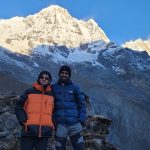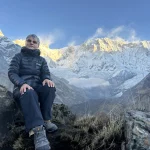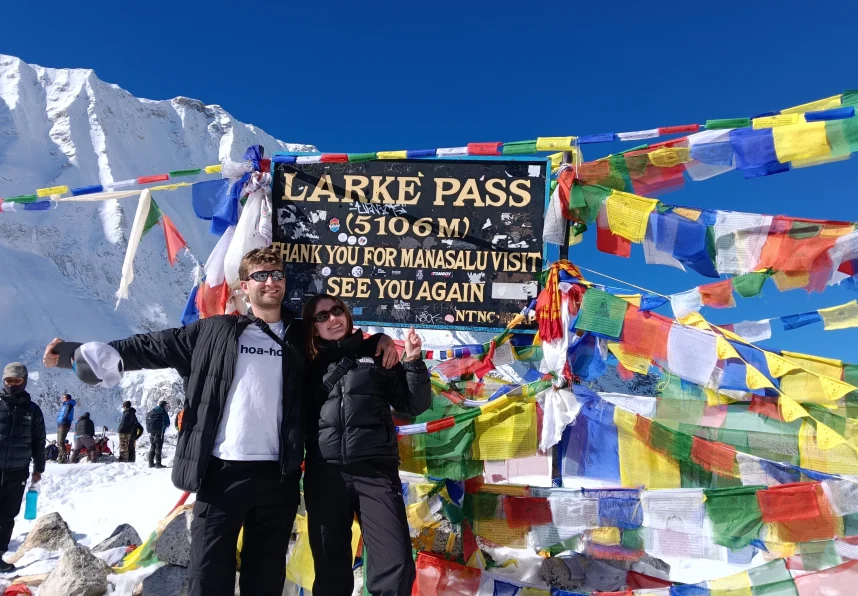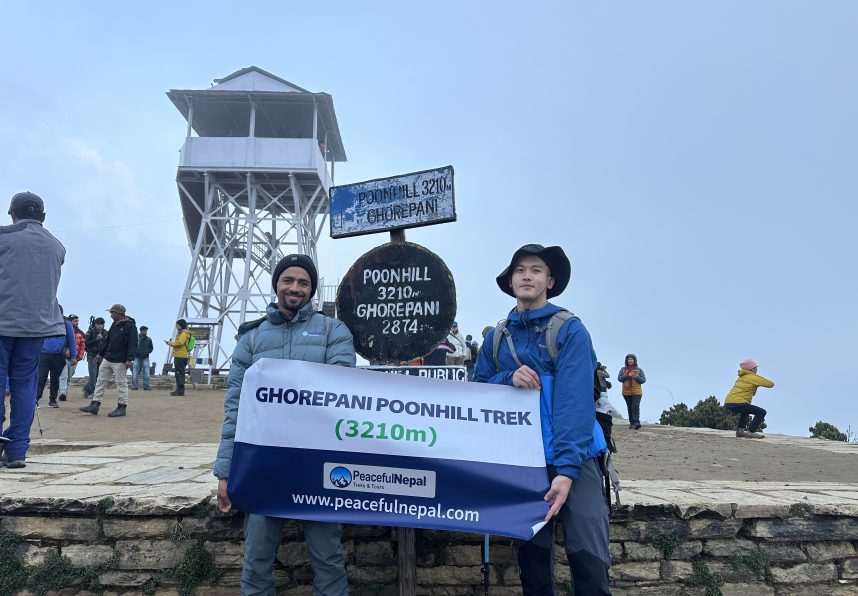The 6-days’ Short Annapurna Base Camp Trek is a thoughtfully curated journey starting from Pokhara. Enveloped by majestic Himalayan ranges like Annapurna, Dhaulagiri, and Machhapuchhre, this trek is one of Nepal’s most sought-after. Approximately two-thirds of tourists visiting Nepal choose the Annapurna region for its accessibility and scenic allure. With plenty of lodges along the trail and breathtaking hill panoramas, the trek offers both comfort and stunning views.
This adventure begins in Pokhara, a tranquil lakeside city renowned for its natural beauty. The trek is celebrated for its picturesque landscapes, including vistas of Lamjung, Dhaulagiri, Mt. Fishtail (Machhapuchhre), and the Annapurna range.
As you walk through charming villages, lush pine and rhododendron forests, and glacier-carved valleys, the towering peaks of Annapurna (8,091 m), Gangapurna (7,454 m), and Machhapuchhre (6,999 m) remain your constant companions. This short itinerary combines nature, culture, and adventure in one unforgettable journey.
Winter (December–February):
Winter offers a serene experience with snow-dusted landscapes. While the nights can be chilly, especially at higher altitudes, the clear skies make for spectacular mountain views. Daytime temperatures range from 8–12°C, while nights drop below 2°C.
Spring (March–May):
This season is vibrant with blooming rhododendrons, creating colorful trails. Temperatures range from 15–18°C during the day and 7–8°C at night. Though some days may be cloudy, spring offers an ideal mix of mild weather and natural beauty.
Autumn (September–November):
Known for its stable weather and crystal-clear skies, autumn is perfect for trekking. Daytime temperatures hover around 14–15°C, with nights cooling to 5–8°C. The unobstructed mountain views during this time are unparalleled.
Read detailed information of Best Time to Visit Nepal:
The Short Annapurna Base Camp trek is a moderately demanding adventure, ideal for trekkers of all ages with strong fitness, willpower, and resolve. The trail will involve the longer ascents and steep stone staircases. Trekkers sometimes have to walk on the strenuous and slippery terrain as well. However, it does not require technical climbing skills, and it is achievable for most trekkers.
Key Difficulty Factors:
The Short Annapurna Base Camp trek is a that blends adventure, culture, and breathtaking Himalayan scenery, along with the immersive local culture. The itinerary is designed for the trekkers who want to experience the grandeur of the Annapurna Base Camp in just less than a week, making it both time-efficient and a rewarding journey.
Major Reasons to Choose This Trek:
Day 01: Fly to Pokhara, Drive to Jhinu Danda, and Trek to Chhomrong
Day 02: Trek from Chhomrong (2,170m) to Himalaya (2,890m) or Deurali (3,174m)
Day 03: Trek from Himalaya/Deurali to Annapurna Base Camp (4,130m) via Machhapuchhre Base Camp (3,720m)
Day 04: Trek to Bamboo (2,310m)
Day 05: Trek to Jhinu Danda (1,780m)
Day 06: Trek to Siwai, Drive to Pokhara, and Fly to Kathmandu
Your adventure begins with a scenic 25-minute morning flight to Pokhara, offering stunning views of the Himalayas. Upon arrival, a short drive (2–3 hours) takes you to Jhinu Danda, where you can enjoy lunch. From Jhinu, the trek begins with a gentle hike along picturesque trails leading to Chhomrong Village, known for its incredible mountain views and warm hospitality.
Today’s journey starts with a descent to Chhomrong Khola, followed by an ascent through lush bamboo and rhododendron forests. Passing through Sinuwa, you’ll traverse serene trails before reaching Himalaya or Deurali. Along the way, enjoy the tranquil beauty of nature and immerse yourself in the pristine surroundings.
After breakfast, the highlight of your trek begins. The trail gradually ascends to Machhapuchhre Base Camp (MBC), offering breathtaking views of glaciers, rocky moraines, and towering peaks like Mt. Machhapuchhre and Gangapurna. From MBC, the journey continues to Annapurna Base Camp, surrounded by majestic peaks like Annapurna I, Machhapuchhre, Hiunchuli, and Gangapurna.
Enjoy the surreal experience of being in this natural amphitheater, with awe-inspiring vistas all around.
Wake up to an unforgettable sunrise at Annapurna Base Camp. After breakfast and some time to explore and capture the beauty of the base camp, begin your descent. The trail takes you through familiar paths as you retrace your steps to Bamboo. The descent offers new perspectives of the landscapes you trekked through earlier.
Today, you’ll trek back to Chhomrong and then take a different path that descends through lush bamboo and rhododendron forests to Jhinu Danda. This village is famous for its natural hot springs—a perfect spot to relax and soothe your muscles after days of trekking. Treat yourself to a rejuvenating dip in the warm waters.
After a hearty breakfast, embark on a short trek to Siwai, where a vehicle will be waiting to drive you back to Pokhara. Upon reaching Pokhara, you can enjoy some leisure time exploring the vibrant Lakeside area before heading to the airport for your flight back to Kathmandu. Once in Kathmandu, you’ll be transferred to your hotel, marking the end of your incredible journey.

During the trek, you’ll stay in tea houses or lodges offering clean beds, warm blankets, and basic amenities. While the dining halls are heated, the rooms can be quite cold at night.
Meals include a mix of local Nepalese dishes and international cuisine (Italian, Indian, Continental, Tibetan, etc.). Drinking water is available for purchase as bottled, boiled, or filtered water.
Peaceful Nepal Treks will provide guides and porter facilities on demand for the Short Annapurna Base Camp trek to ensure the safety, comfort, and local cultural insights along the journey. We have experienced guides who will lead our way, providing deep and key insights on sharing local knowledge that manages logistics and assisting with altitude awareness.
The porters can carry the heavy bags, allowing trekkers to enjoy the breathtaking trail and its scenery. Peaceful Nepal Treks provides government-licensed and English-speaking guides. The guides’ services will be top-notch, and they are expert in managing emergency services if required. With our 24/7 assistance and personalized itineraries while focusing on safety, the guides will make the trek more enjoyable with their assistance and company.
Your gear will depend on the season of your trek. Essentials include warm clothing, comfortable trekking boots, and a small daypack for carrying water, snacks, and valuables. Porters will carry your larger luggage, but make sure to pack light. Gear can also be purchased or rented in Kathmandu or Pokhara if needed.
Travel insurance is mandatory for the trek. Ensure your policy includes coverage for high-altitude trekking, emergency evacuation, and helicopter rescue. World Nomads like travel insurance does cover the high altitude medical evacuation and heli rescue.
Most of the Teahouses have the facility of a landline phone for communication services. Wi-Fi is also available at most teahouses these days. However, to constantly keep in touch, the satellite phone is used by the guides.
For one porter, the maximum cap of porter load is 30 kgs, which means for one trekker, the baggage load shouldn't be more than 15 kg as per the guideline. This helps the porter to ensure comfort and fair labour practices and avoid overpacking.
Yes, Peaceful Nepal Treks accommodate the cultural interactions with the locals and museums as part of the itinerary. These provide rich context to our adventure with the blend of cultural immersion.
The budget packages by the Peaceful Nepal Treks do not include equipment and gear oforrent for the trek. However, if you insist, Peaceful Nepal Treks will arrange the gear and equipment required for you at rental on a rental price
Charging facilities are provided in the common areas, like at the dining hal,l only in the local teahouses. The teahouses may charge a small cost of NPR 100-200 per person for charging one electric device for an hour.
The guides will carry the first aid kits. The nearby healpostsost during the trek are located at Ghandruk, S,iwai and Jhinu Danda. During our time at MBC or Annapurna Base Camp, the most common emergency response would be helicopter evacuation.
In Nepal, tipping is customary and not mandatory. The trekker can tip the guide and a porter anything he/she wants. General practice is tipping 10-15% of the trek cost among the staff which is to be shared among the group.
The flexibility of extending the trek is available in Peaceful Nepal Treks. You can personalize the trek if you want extra sightseeing and city tours, we will arrange the necessary logistics for you to the additional fee.
Peaceful Nepal Treks advocates sustainable trek. We practice waste management and support local trail maintenance. The guides and the crew are also well-aware of the fact for being environment friendly during the treks like Annapurna Base Camp
While it is possible to trek Annapurna Base Camp solo, but we do not recommend doing so. Having a guide with you in a pre-planned schedule will help you find the best accommodation and get the important insights to the trek.

In May I went on a six day trek to Annapurna Base Camp. “Peaceful Nepal Treks & Tours” was fantastic, the owner & tour guide Bishnu was the best I could ask for. Bishnu was great, I loved his enthusiasm. I highly recommend.
During the trek, he provided high quality sleeping bags and jackets, and shared his photos of us afterwards, it was very fun.
We went through Rhododendron forests, and enjoyed the beautiful Himalayan mountains.

We completed the 6 day ABC trek plus additional temple tours in Kathmandu
Bishnu, the owner was our trekking guide
Everything was covered and he is an experienced guide
The spring trees and foliage were beautiful
We added a trip to Nargarkot with some additional hiking
Bishnu will organize other activities and is very responsive to requests for information.




If you are looking for travel in Nepal, Bishnu will help you to make your perfect trip plan. He has been working on this industry for more than 10 years